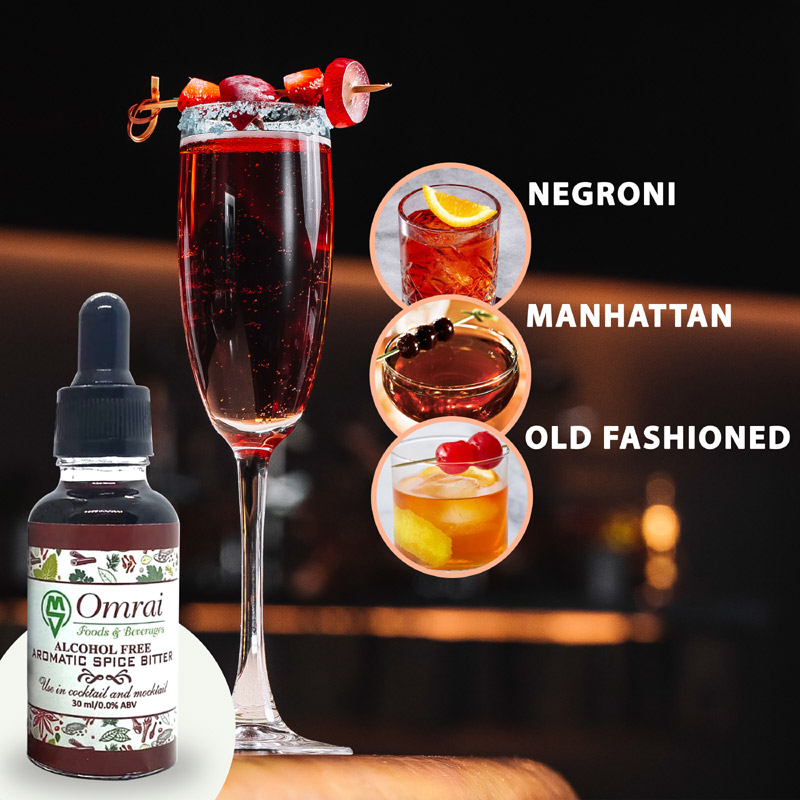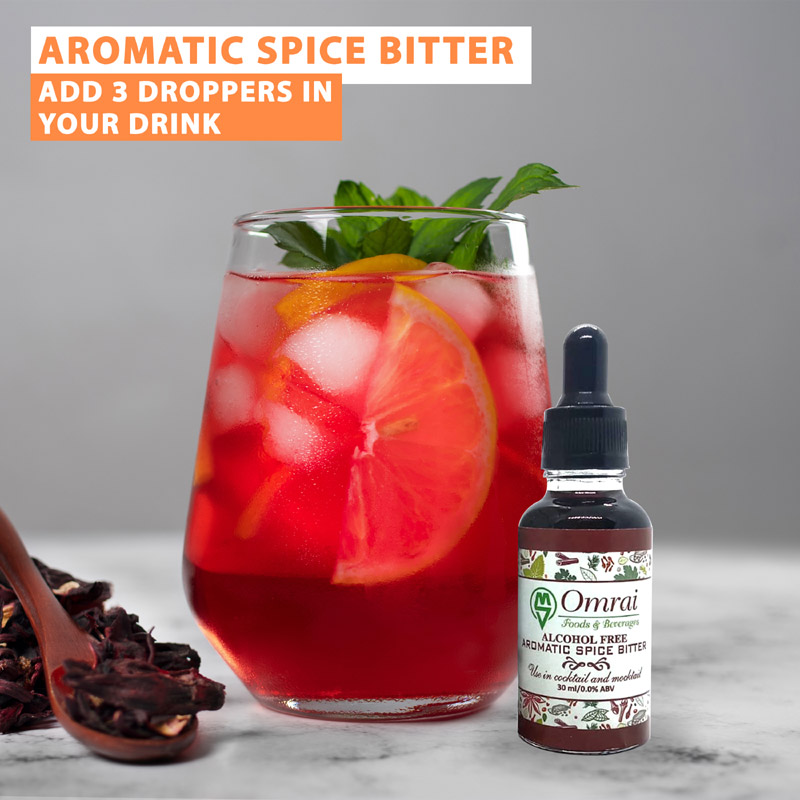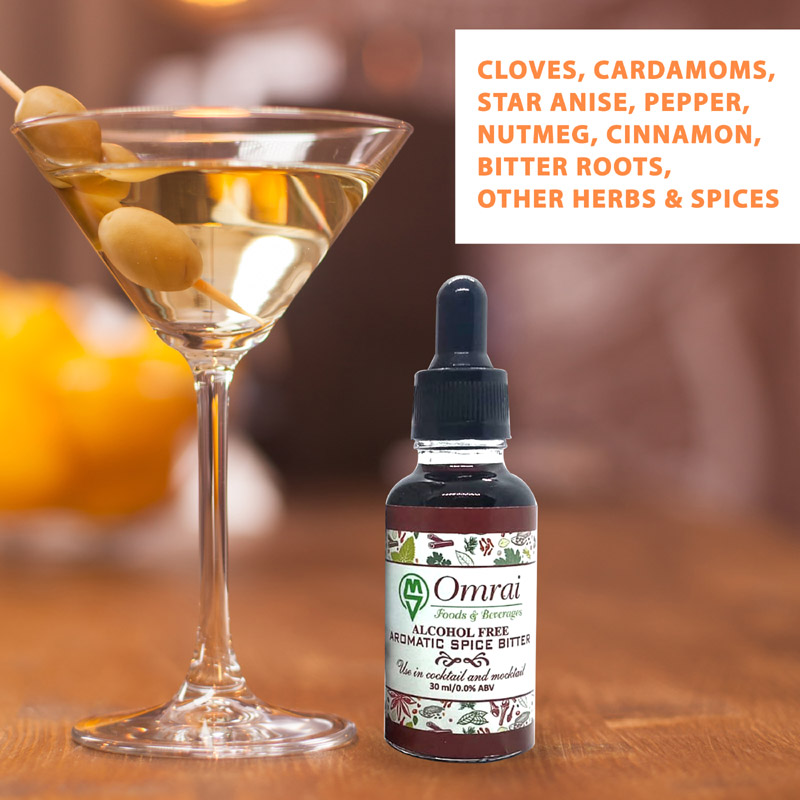“Delving into the Intricacies of Aromatic Spice Bitters in Mixology: Revealing the Essence of Bitter Elegance”


Introduction:
Aromatic Spice Bitters in Mixology cocktail and mocktail
Cocktail culture has evolved over the years, and one of the key players in this transformation is the use of aromatic bitters. These small, concentrated flavor enhancers have become essential in mixology, adding depth, complexity, and a delightful touch of bitterness to your favorite drinks. Among the various types of bitters, aromatic spice bitters stand out for their rich and complex flavor profiles. In this blog post, we will dive into the world of aromatic spice bitters and explore how they can elevate your cocktail game.
The Art of Bitters:
Bitters, in general, are concentrated extracts made from a combination of botanicals, herbs, spices, and bittering agents. Aromatic bitters, as the name suggests, are infused with aromatic spices, herbs, and other botanicals. The result is a potent elixir that not only adds a tantalizing bitterness but also infuses your cocktail with a symphony of complex flavors.
Common Ingredients in Aromatic Spice Bitters:
Aromatic spice bitters contain a wide range of ingredients, making them a versatile choice for mixologists. Common components include:
Herbs: Ingredients like gentian, wormwood, and quassia add a distinct bitterness and herbal complexity to the bitters.
Spices: Cinnamon, cloves, allspice, and cardamom provide warm and spicy notes, perfect for adding depth to cocktails.
Citrus: Orange and lemon peels lend a refreshing citrusy zing.
Roots: Sarsaparilla and angelica root contribute earthy undertones.
Aromatic Barks: Cassia and cherry bark bring a subtle sweetness and a touch of cinnamon-like spice.
Other Botanicals: Depending on the brand and recipe, you may find unique ingredients like chamomile, lavender, or even exotic herbs and spices.
Versatility in Mixology:
Aromatic spice bitters are a versatile addition to your cocktail repertoire. Here are a few ways to use them:
Classic Cocktails: Bitters are a staple in classics like the Old Fashioned, Manhattan, and Sazerac, where they add depth and balance to the cocktails.
Custom Creations: Unleash your creativity by experimenting with aromatic bitters in your own cocktail creations. Try them in a Negroni or a Whiskey Sour for a twist on tradition.
Flavor Enhancement: A few dashes of aromatic spice bitters can transform a simple cocktail into a complex and sophisticated experience.
Mocktails: Don’t drink alcohol? No problem! Aromatic bitters can also elevate non-alcoholic drinks, adding a layer of intrigue to your virgin cocktails.
Cooking: Beyond cocktails, bitters can be used in cooking, adding depth and complexity to sauces, marinades, and desserts.
Brands and Varieties:
There is a wide variety of aromatic spice bitters available, each with its unique flavor profile. Popular brands like Angostura, Peychaud’s, and Fee Brothers offer bitters that can be found in many bars and liquor stores. However, you can also explore artisanal bitters crafted by small producers for an even more distinctive taste. The aromatic spice bitter is favored choice of the mixologist.
- Aromatic: Aromatic spices have a strong, pleasant fragrance that enhances the overall flavor of a dish.
- Spice: Bitter aromatic spices add depth and complexity to various cuisines from around the world.
- Bitter: These spices have a slightly bitter taste profile that balances and contrasts with other flavors.
- Culinary Uses: They are commonly used in both sweet and savory dishes to enhance the overall taste.
- Examples: Some examples of aromatic bitter spices include:
- Cumin: Known for its warm, nutty flavor with a subtle bitterness, commonly used in Indian, Middle Eastern, and Mexican cuisines.
- Fenugreek: Has a bitter taste with a hint of sweetness, frequently used in Indian curries and pickles.
- Coriander: Provides a citrusy and slightly bitter flavor to dishes and is prevalent in Mediterranean, Indian, and Southeast Asian cooking.
- Angelica root: Used as a bitter aromatic spice in traditional herbal liqueurs and bitters.
- Dandelion root: Often used as a bitter spice or in herbal teas to add depth to the flavor.
- Tarragon: A herb with a slightly bitter and licorice-like taste, commonly used in French cuisine.
- Medicinal Uses: Some bitter aromatic spices are also used for their medicinal properties, as they are believed to aid digestion and provide other health benefits.
- Balance and Contrast: Bitter aromatic spices are crucial in achieving a well-balanced and interesting flavor profile in dishes.
- Usage Tips: They should be used in moderation, as an excessive amount of these spices can overpower the dish and make it unpalatable.
- Herbal Remedies: Many of these spices have been used in traditional medicine for various purposes due to their unique flavor and potential health benefits.
- Global Influence: These aromatic bitter spices play a significant role in shaping the culinary traditions of different cultures worldwide.
Conclusion:
Aromatic spice bitters are a valuable tool in a mixologist’s arsenal, enhancing the depth and complexity of cocktails with their unique blend of herbs, spices, and botanicals. Whether you’re a seasoned bartender or an at-home cocktail enthusiast, incorporating aromatic spice bitters into your creations is an excellent way to elevate your drinks to new heights. The next time you’re crafting a cocktail, don’t forget to add a dash of these aromatic elixirs for a touch of bitterness and a world of flavor. Cheers to the art of bitters and the unforgettable experiences they bring to your glass!




